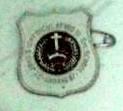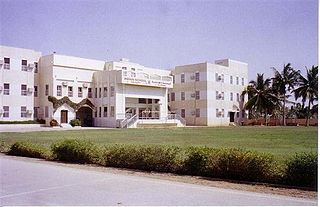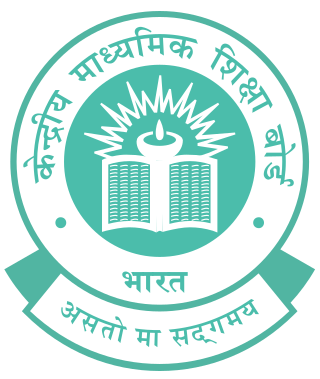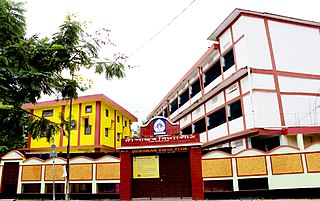
Assam is a state in northeastern India, south of the eastern Himalayas along the Brahmaputra and Barak River valleys. Assam covers an area of 78,438 km2 (30,285 sq mi). It is the second largest state in northeastern India by area and the largest in terms of population. The state is bordered by Bhutan and Arunachal Pradesh to the north; Nagaland and Manipur to the east; Meghalaya, Tripura, Mizoram and Bangladesh to the south; and West Bengal to the west via the Siliguri Corridor, a 22-kilometre-wide (14 mi) strip of land that connects the state to the rest of India. Assamese and Boro are the official languages of Assam. Meitei (Manipuri) is the official language of Hojai district and the entirety of the Barak Valley region, while Bengali is an official language in the three districts of Barak Valley.

Boro, also rendered Bodo, is a Sino-Tibetan language spoken primarily by the Boros of Northeast India and the neighboring nations of Nepal and Bangladesh. It is an official language of the Indian state of Assam, predominantly spoken in the Bodoland Territorial Region. It is also one of the twenty-two languages listed in the Eighth Schedule of the Constitution of India. Since 1975 the language has been written using the Devanagari script. It was formerly written using Latin and Eastern-Nagari scripts. Some scholars have suggested that the language used to have its own now lost script known as Deodhai.
Dhanmondi Government Boys' High School (DGBHS) is a public boys' school located in Dhanmondi, Dhaka, Bangladesh. It is a state run educational institution located at the intersection of Mirpur Road and Manik Miah Avenue. Originally started as the model government school to educate the children of higher government officials, member of parliaments, and prominent businessman of the capital, the school is now open to every student despite of background. With a diverse group of successful and well known alumni network all over the world, DGBHS has been grooming the best of the country till date. DGBHS also played a very vital role in help sheltering the Mukti Bahini during the Liberation War, resulting the total demolition of the school campus by an air strike by the Pakistan Air Force. Continuing the legacy, DGBHS students were one of the core organisers of the 2018 Bangladesh road-safety protests.
The Board of Secondary Education, Assam commonly known as SEBA, is the state education regulatory board under the jurisdiction of Ministry of Education, Government of Assam for conducting examinations and providing assurance for the quality of education imparted in schools within Assam, India that are affiliated to it. It offers education in Bodo, English (IL), Assamese, Bengali, Hindi, Meitei (Manipuri), Hmar, Nepali, Mizo, Khasi, Garo, Karbi and Urdu languages.
Jnanadeepa School is an educational institution in Shivamogga District, Karnataka, India. It is run by the private education foundation Sri Aurobindo Foundation for Education (SAFE) through the Jnanadeepa Vidya Samsthe which also runs Sri Aurobindo PU College, Shimoga. The institution follows the CBSE curriculum and was the first private institution in the district to be affiliated to CBSE, Delhi.

St John's Matriculation Higher Secondary School is a school in Alwarthirunagar which had its beginnings in the early 1980s. The school was founded by D John Ponnudurai. This school is part of IYAP consortium. The school follows Matriculation Syllabus for students between Grade 1 to Grade 10 and Tamil Nadu State Board for grades Eleven and Twelve. It has branches in Porur, Triplicane and a sister school in the name of the Good Shepherd in Alwarthirunagar. The medium of education is English with Tamil, Hindi and French as second languages.

Sri Lohit High School is an educational institute in the lower part of Majuli, Jorhat, Assam, India. It is said to have been named after the Lohit River, a tributary to the Brahmaputra River. It has both the high and Middle English section. The Sri Lohit High School and Sri Lohit Middle English School are on the same campus with a single school building.

Prof Bhabananda Deka was a pioneer Assam economist and author who conducted novel research on the economy of the far eastern part of India. He was also a leading Indian-Assamese litterateur of the famed 'Awahon-Ramdhenu Era' of Assamese literature during the mid-20th century. He was the author of a total of 115 English and Assamese books including textbooks on a range of fifteen subjects including economics, ancient Assamese literature, philosophy, education, religion, mythology, archaeology, tribal study, poetry, drama, memoirs, civics, political science, biographies; he also edited books and journals. He also authored a variety of research papers and articles about the state of Assam, a state in the north-eastern part of India. He pioneered the writing of books on Economics in Assamese. His Assamese book Axomor Arthaneeti was the first ever research-based comprehensive book on Assam Economics, which was published for the first time in 1963. He was conferred with the honorary title of 'Asom Ratna' -- 'Jewel of Assam' by the intellectuals of Assam on 19 August 2007 at a public meet held under the presidency of Prof. (Dr) Satyendra Narayan Goswami.

The Indian School Salalah is an Indian-run, self-financing, co-educational institution, primarily established to meet the academic needs of children of Indian expatriates working in the Sultanate of Oman in the Persian Gulf. The school also admits children of other nationalities. The school is located in the Dahariz area, of Salalah town, in the southern governorate of Dhofar.

The Central Board of Secondary Education (CBSE) is a national level board of education in India for public and private schools, controlled and managed by the Government of India. Established in 1929 by a resolution of the government, the Board was an experiment towards inter-state integration and cooperation in the sphere of secondary education. There are more than 27,000 schools in India and 240 schools in 28 foreign countries affiliated to the CBSE. All schools affiliated to CBSE follow the NCERT curriculum especially from class 9 to 12. The current Chairperson of CBSE is Rahul Singh, IAS.
Jawahar Navodaya Vidyalaya, Veleru is one of the approximately 661 Jawahar Navodaya Vidyalayas in India, located in Veleru village, Bapulapadu mandal near Hanuman Junction in Andhra Pradesh. It was established in 1989 by the Department of Education, MHRD.| Jawahar Navodaya Vidyalayas were planned to set up in all the districts of the country in order to provide an education to children from predominantly rural areas. They form a part of the system of gifted education.

Sainik School Goalpara, Assam, India, was established on 12 November 1964, under the Sainik Schools Society, New Delhi under the Ministry of Defence (India). The idea of Sainik schools were presented by the then Defence Minister V.K.Menon in 1961. The school was established in the town of Goalpara which is a district headquarter. Subsequently, the school was shifted to its present location at Rajapara Village in Mornai in Goalpara District. Initially 18 Sainik schools were founded.

Dipankar Vidyapith is an Assamese medium private school in Jorhat, India. It is located near Malow Ali in the heart of the city. There are 30 staff and more than 600 students. The languages of instruction are Assamese and English. Students of Dipankar Vidyapith appear for High School Leaving Certificate under the Board of Secondary Education, Assam.

St. Joseph's Boys' School is a boys' school up to matriculation and a co-educational school in its higher secondary level in Jalandhar city of Punjab, India.
Keshab Ram Borah Higher Secondary School is an educational institute in the middle part of Majuli, Jorhat, Assam, India. It has both the high and Middle English section. Both the Keshab Ram Borah Higher Secondary School and Gereki Janajati Middle English School are situated in the same campus with a single school building.
Assam – 16th largest, 15th most populous and 26th most literate state of the 28 states of the democratic Republic of India. Assam is at 14th position in life expectancy and 8th in female-to-male sex ratio. Assam is the 21st most media exposed states in India. The Economy of Assam is largely agriculture based with 69% of the population engaged in it. Growth rate of Assam's income has not kept pace with that of India's during the Post-British Era; differences increased rapidly since the 1970s. While the Indian economy grew at 6 percent per annum over the period of 1981 to 2000, the same of Assam's grew only by 3.3 percent.
Padmapara High School was established in 1981 in the south east corner of Barpeta district at Padmapara Village, Assam, India. Md Mulam Khan was the first headmaster of this school. This school is playing a very important rule in proving quality in these area. This school has provincialised in 1991. Now the school is situated at Padmapara Village about 20km away from Barpeta. There are 18 staff and around 250 students. The language of instruction is Assamese. Students of this school appear for High School Leaving Certificate under the Board of Secondary Education, Assam.

Vivekananda Vidyapith Higher Secondary School is a Bengali medium school established in 1965 in the Central Colony area of the Railway Township of New Bongaigaon. This is a Bengali Medium School under SEBA. From class pre-school to X it offers education in Bangla and in the Higher Secondary Section from class XI to XII it offers courses in Assamese in the Arts stream only. The school has three administrative sections -
The Miya people, alternatively identified as Na-Asamiya by themselves, denote the progeny of Bengali Muslim migrants originating from the contemporary Mymensingh, Rangpur, and Rajshahi Divisions. These individuals established residence in the Brahmaputra Valley during the 20th century, coinciding with the period of British colonial rule in Assam. The migration of the Miya people was actively promoted by the Colonial British Government from the Bengal Province, spanning the years 1757 to 1942. This migratory trend persisted until the year 1947. Presently, the term "Miya" is employed as a discriminatory label.

The social movement of Meitei language to be included as an associate official language of the Government of Assam is advocated by several literary, political, social associations and organisations as well as notable individual personalities of Northeast India.










